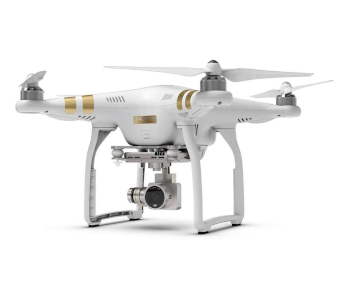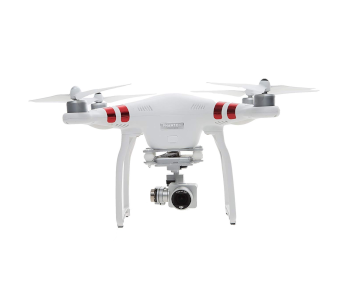DJI Phantom 3 Series Pros and Cons
The DJI Phantom 3 is the 3rd generation product line of the Phantom series. This product line was first launched in April 2015. DJI is a market leader in commercial drones and the Phantom series is one of DJI’s most popular product lines. Phantom drones are easy to use and they can fly straight out of the box with only a few set-up requirements.
The Phantom 3 models were the first ones to have a downward facing sensor. This allowed the drone to remain in place even with the loss of GPS signal. It was also the first time that the Phantom series drone was updated to be able to work with the GLONASS system. Lastly, DJI also added its flagship communication system Lightbridge on the majority of Phantom 3 models.
As you may already know, the Phantom 3 series was designed by DJI for aerial cinematography and photography applications. The Phantom 3 drones are considered as “Consumer” drones because they have features that are perfect for recreational as well as semi-professional users. These drones have decent video quality, safety features, and drone controls. They are powerful enough for semi-professionals and simple enough for beginners.
Pros
Price
The Phantom 3 series drones are currently all priced under US$1,000. The prices vary from around $400 to around $850. That is substantially less than what you will have to pay for a decent Phantom 4 drone or even a Mavic drone. Now that the Phantom 3 is phased out, the prices may go even lower and you may be able to push for a really good deal on a used/pre-owned model. So, value buyers will definitely find the Phantom 3 drones to be a good buy.
Decent video quality

The Phantom 3 Professional, 4K, and SE models can all shoot 4K video at 30 frames per second. That is pretty good video resolution considering the low price that you can buy those Phantom 3 models for. The other two models, Phantom 3 Standard and Phantom 3 Advanced aren’t too shabby with their video quality either. They can both do 2.7K at 30 frames per second. 30 frames per second is decent enough for a slow-motion section in your video or vlog. Hence, in terms of video quality, all Phantom 3 drones are pretty capable.
Coming to the video bit rates, the Phantom 3 Professional, 4K, and SE models all have a maximum bit rate of 60 Mbps. The Phantom 3 Standard and the Phantom 3 advanced have a bit rate of 40 Mbps. These are pretty good bit rates, and even comparable to some of the Phantom 4 models. A higher bit rate means a better quality of video. To put things into perspective, Blu-Ray has a bit rate of 25 Mbps. So, we are talking more than double the quality of Blu-Ray.
JPEG and RAW option
The Phantom 3 camera allows the user the option to save images in JPEG or RAW format. Many advanced DJI drones also offer this option. Hence, the Phantom 3 does not lack its more expensive peers in any way on this particular metric. If you like editing your pictures, then it is always nice to have a RAW file.
Good operating range
The Phantom 3 has a 2.4 GHz frequency, which is on par with other models of the more recent Phantom 4 series. This gives it a pretty decent operating range of 4-5km. Only the Phantom 3 standard and the Phantom 4K have a lower range of around 1 km because they only have the 5.7 GHz band.
Better navigation accuracy
The GPS system in the Phantom 3 series drones uses both the American GPS and the Russian GLONASS satellites. Only the Phantom 3 4K and the Phantom 3 Standard use the GPS system as the sole navigational system. Using a combination of GPS and GLONASS systems makes the navigation more accurate and also reliable, as there may be times when the signal from any one satellite cannot be obtained.
Improved communication system
While the Phantom 3 SE and Phantom 3 standard both use Wi-Fi for communication between the drone and the remote controller, all other Phantom 3 models use the improved and powerful Lightbridge communication system. Lightbridge not only boosts operating range, but also enables better controlling of the drone. This is because the master and slave architecture of the Lightbridge system separates the drone controls and camera plus gimbal controls into two separate links.
Cons
No built-in screen for the remote controller
Unlike some models of the Phantom 4 series and the Mavic series, the Phantom 3 series drones do not have the option of buying a controller with a built-in screen. This means that you will always have to use your mobile device or tablet to see the video feed of your drone. You will also need the mobile device to change the settings for the drone. You will have to make sure that your phone screen is large enough to easily control your drone functionality. Having a built-in screen makes the controller a little more ergonomic.
Bulky design
The Phantom 3 series drones cannot be folded or made as compact as the Mavic drones can. The set-up time with the Phantom 3 drones is also a bit longer because one needs to mount and un-mount the propellers on the drone body before and after each flying session respectively.
In terms of the actual drone weight, the Phantom 3 drones weigh between 1216 grams to 1280 grams depending on the model that one purchases. For people who like to travel light, carrying the Phantom 3 series drones is not so simple given the weight and bulkiness of the overall design.
Battery life

A flight time of around 23 to 25 minutes is pretty average, when one considers that more recent DJI drone series can offer up to 30 minutes of flight time. And if you are looking to do some serious videography or even a semi-professional photography project, then 25 minutes is so short that it will feel like those minutes have flown past you. For such projects, you probably will require backup batteries that you can swap when one battery runs out. Extra battery packs will cost you as well so you will have to keep that extra bit of buffer in your budget. Also, remember that swapping batteries will require you to bring the drone back in from where it is flying before sending it out on a new battery. That will eat up precious time when you are in the middle of a shoot.
No Advanced Automatic Flying modes
The Phantom 3 series drones do not have the automatic flying features like the machine-learning drive ActiveTrack or TapFly. The Phantom 4 drones have these features and they are pretty useful. They allow you to perform various functions as you fly. For example, the ActiveTrack not only tracks the object, but also allows you to set the height and distance from which to track the object/person. Another useful feature is the No Fly Zone in which the drone automatically brings itself down in a no-fly zone, saving you the trouble with the law.
No multiple obstacle sensors
Unlike more recent DJI drones, the Phantom 3 drones only have a bottom sensor for obstacle avoidance. There are no front or side sensors. For a newbie, the biggest fear is crashing the drone. It is the obstacle sensors that prevent such a disaster from happening. The more sensors there are, the better the safety-factor of the drone. And, that is where the Phantom 3 lacks when compared to other DJI models.
Conclusion
If budget is of prime importance, then Phantom 3 is a satisfying purchase. You can pay significantly less for a drone while still get some pretty good features. There is 4K video capability, the ability to stream your camera feed live on YouTube, and a decent navigation setup using GPS and GLONASS satellite systems.
If you want DSLR-like quality, the luxury of a built-in screen for your remote controller, and automatic features like following an object or avoiding obstacles in complex environments, then there are better models to look at instead of the Phantom 3. If you like flying for longer durations then keep in mind that the Phantom 3 has a really short battery life of around 23 minutes. The Phantom 3 is also not the most compact drone either.
So, in the end, it all comes down to the price you want to pay and the value you expect to get for that price. If you want all the latest features and the automation, and if you do not mind paying for those comforts, then there are better drones than the Phantom 3 series. If you can live with not having the latest and greatest, then you will find value in the Phantom 3.

